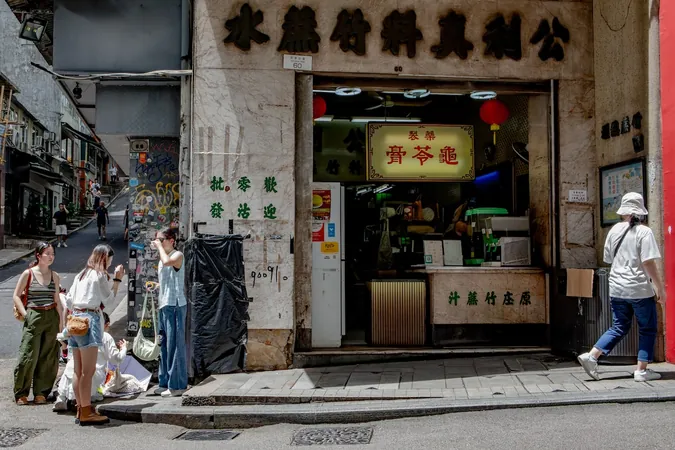
Unearthing Hong Kong's Secret Past: The Vanishing Ghost Signs
2025-09-21
Author: Ming
In October 2023, a routine day took an unexpected turn on Hong Kong's bustling Hollywood Road when a car crashed into a shop, revealing a forgotten piece of history. As the debris fell away, a faded red Chinese character emerged from the depths, likely an echo from the Sui Man Book Store that thrived in the 1920s, a haven for literature that was banned across the border at the time.
What Are Ghost Signs and Why Do They Matter?
Known as "ghost signs," these hidden messages offer a glimpse into the city’s past, representing a time and context that has long been obscured. Billy Potts, co-founder of the Hong Kong Ghost Signs project, explains, "A ghost sign is a sign that appears out of context—out of time, out of place, or simply unexpected in its current condition." Alongside photographer Ben Marans, Potts has diligently documented these remnants, ranging from faded advertisements to once-vibrant neon signs, many of which have been carved into terrazzo, a material that adorned the city in years gone by.
Mapping Hong Kong's Hidden Treasures
The duo has recently unveiled an interactive map showcasing over 300 ghost signs, inviting the community to contribute their own discoveries. Potts believes that examining these forgotten signs can reveal the evolving character of Hong Kong, showcasing changes in artistic styles, cultural trends, and societal values: "We no longer see massive cigarette ads painted on buildings, for example."
The Challenge of Preservation Amid Urban Renewal
While urban evolution is an inevitable part of any city, the relentless pace of change in Hong Kong is striking. With sky-high property prices, developers often prioritize profit over preserving nostalgia, leading to the erasure of many iconic landmarks. Despite some government efforts to protect historical sites like the Jamia Mosque and the Old Pathological Institute, criticism looms over missed opportunities to save icons such as the Jumbo Kingdom floating restaurant, which met a tragic fate.
A Culture of Disappearance?
“Hong Kong is basically a culture of disappearance,” Potts asserts. As neon signs fade from the skyline, ghost signs—often overlooked—deserve equal attention. "They possess a subtle charm," he states, emphasizing the urgency of documenting these signs before they vanish completely. In fact, even as Potts and Marans were compiling their recent documentation, several signs disappeared.
A Growing Interest in Historical Conservation
The ongoing ghost signs project has sparked renewed interest in Hong Kong's lost past, with tourists increasingly seeking photo ops in front of landmarks steeped in history. Much like the nostalgic allure of the Kowloon Walled City, which was demolished in 1994, the charm of ghost signs can help bridge the past and present.
Treasures Worth Keeping
For Potts, these remnants are more than just signs—they're valuable assets that define Hong Kong's unique character. "Visitors come to Hong Kong not for another modern city, but for the authenticity of Hong Kong itself," he notes. Despite its brusque, grungy exterior, the city's personality is what makes it truly enchanting.



 Brasil (PT)
Brasil (PT)
 Canada (EN)
Canada (EN)
 Chile (ES)
Chile (ES)
 Česko (CS)
Česko (CS)
 대한민국 (KO)
대한민국 (KO)
 España (ES)
España (ES)
 France (FR)
France (FR)
 Hong Kong (EN)
Hong Kong (EN)
 Italia (IT)
Italia (IT)
 日本 (JA)
日本 (JA)
 Magyarország (HU)
Magyarország (HU)
 Norge (NO)
Norge (NO)
 Polska (PL)
Polska (PL)
 Schweiz (DE)
Schweiz (DE)
 Singapore (EN)
Singapore (EN)
 Sverige (SV)
Sverige (SV)
 Suomi (FI)
Suomi (FI)
 Türkiye (TR)
Türkiye (TR)
 الإمارات العربية المتحدة (AR)
الإمارات العربية المتحدة (AR)